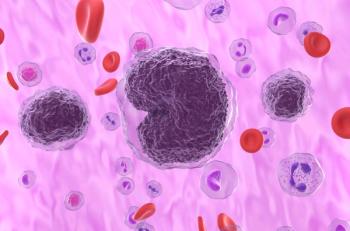
Mitochondrial Pathways Not the Culprit in Bortezomib Neurotoxicity, Study Finds
New research evaluates bortezomib and carfilzomib in an attempt to understand the causes of neurotoxicity in the former. They found the mitochondrial pathway is likely not the problem.
Higher rates of neurotoxicity in bortezomib compared to carfilzomib do not appear to be due to mitochondrial pathways, but rather due to proteotoxic stress, according to a new study looking at the impacts of the therapy in
When it was approved by the FDA in 2003, bortezomib became the first selective proteasome inhibitor available for treating multiple myeloma and mantle cell lymphoma, write corresponding author Buket Alpertunga, PhD, of Turkey’s Istanbul University, and colleagues.
Carfilzomib, meanwhile, has been approved by the FDA for patients with relapsed myeloma or myeloma that is resistant to other treatments.
The second-generation proteasome inhibitor has fewer off-target effects, representing a new paradigm for proteasome inhibitors.
“Although proteasome inhibitors induced peripheral neuropathy is thought to be a ‘class effect’ of proteasome inhibitors, the introduction of [carfilzomib] in the treatment suggested that [bortezomib] and [carfilzomib] have different neurotoxic side effect profiles,” Alpertunga and colleagues wrote.
While the newer therapy is less prone to cause peripheral neuropathy, it’s unclear exactly why that is.
One hypothesis, based on animal studies with bortezomib, is that mitochondrial toxicity causes the increase in peripheral neuropathy.
“Mitochondrial structural and functional abnormalities in animal models were found to be related with [bortezomib] induced peripheral neuropathy,” the authors note.
In the new study, Alpertunga and colleagues attempt to test that hypothesis in a head-to-head comparison. The team used a variety of analyses, including LC-MS/MS, flow cytometry, RT-qPCR, confocal microscopy, and western blotting to characterize the neurotoxic effects of both bortezomib and carfilzomib.
“This allowed us to map the involved molecular pathways, protein complexes and biological processes through functional enrichment analyses,” the investigators wrote. “Further, experiments were performed to investigate and/or validate the effects of these drugs on mitochondrial dynamics, mitochondrial respiratory complexes, heat shock response, and cellular proteotoxic stress.”
The analysis showed both differences and similarities between the 2 drugs.
“We showed that bortezomib and carfilzomib affected the human neuronal proteome differently,” Alpertunga and colleagues wrote, “and bortezomib caused higher proteotoxic stress via protein oxidation, protein K48-ubiquitination, heat shock protein expression upregulation and reduction of mitochondria membrane potential.”
However, the analysis did not validate the mitotoxicity hypothesis. The 2 therapies did not affect the gene expression levels of mitochondrial dynamics and overall mitophagy rate, Alpertunga and colleagues said. PINK1/Parkin-mediated mitophagy gene expressions were altered in both drugs, they report.
“Bortezomib and carfilzomib caused downregulation of the contents of mitochondrial oxidative phosphorylation complexes, voltage-dependent anion channel 1 (VDAC1) and uncoupling protein 2 (UCP2) similarly,” they said.
Alpertunga and colleagues found that both drugs appear to induce mitotoxicity besides proteotoxic stress in human neuronal cells. They conclude that the higher incidence of neurotoxicity in bortezomib doesn’t appear to be related to mitochondrial pathways.
Reference
Jannuzzi AT, Arslan S, Yilmaz AM, et al. Higher proteotoxic stress rather than mitochondrial damage is involved in higher neurotoxicity of bortezomib compared to carfilzomib. Redox Biology. 2020;32:101502. doi:10.1016/j.redox.2020.101502.
Newsletter
Stay ahead of policy, cost, and value—subscribe to AJMC for expert insights at the intersection of clinical care and health economics.













































